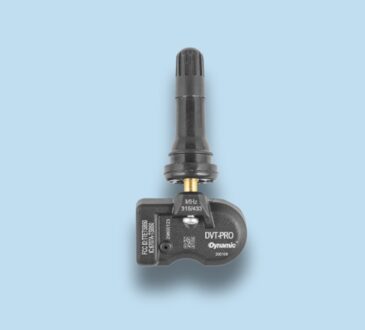Screen printing is a way of printing a design onto a flat surface by pressing ink through a mesh screen with a stencil. It’s a method used in many industries, and chances are you’ve worn or used something that was made using this process, even if you didn’t know it and many businesses turn to ApparelGraphics.com for quality screen printing. Sometimes it’s called serigraphy or silk screen printing, but all of these names describe the same basic technique.
This method works well for printing posters, artwork, and even fabric. It’s commonly used to make custom clothing and other products. In this guide, we will answer your questions about screen printing, such as:
- What is screen printing?
- Why is screen printing used?
- Step-by-step screen printing process
- Screen printing equipment
- Does screen printing wash out?
- How does screen printing compare to digital printing?
- How does screen printing differ from heat transfer printing?
- A look at the history of screen printing
What Is Screen Printing?
Screen printing is a process where a stencil design is transferred to a flat surface using a mesh screen, ink, and a squeegee. While fabric and paper are the most common surfaces, it’s also possible to print on wood, plastic, metal, and glass using special inks. The main idea is to make a stencil on a mesh screen and then push ink through it to leave a design on the surface below.
This process may also be called “silk screening” or “silk screen printing.” While the overall method stays the same, there are different ways to make the stencil, depending on the materials being used. These include:
- Covering parts of the screen with masking tape or vinyl
- Painting the screen with glue or lacquer to block certain areas
- Using a light-sensitive emulsion to create a stencil in a way similar to developing a photo
Designs made through screen printing may use one or more colors. When several colors are used, each one is applied in its own layer, using a separate stencil for each color.
Why Is Screen Printing Used?
Screen printing is popular because it creates bright and bold colors, even on dark materials. The ink sits on top of the surface, which gives it a slightly raised, textured feel.
This method is also great for repeating the same design over and over. Once the stencil is made, it can be used to print many copies, making it a good choice for printing team uniforms, workwear, or other bulk orders.
With the right equipment and skills, screen printing can also be used to create detailed multicolor designs. While there is a limit to how many colors can be used, it offers more vibrant color than many digital printing methods.
The Screen Printing Process Step-by-Step
There are several ways to screen print, but they all follow a similar process. This guide focuses on the method that uses a light-sensitive emulsion, which is commonly used in commercial printing due to its ability to produce detailed designs.
Step 1: The Design Is Created
The process begins by printing the design onto a transparent acetate sheet. This sheet is later used to make the stencil.
Step 2: The Screen Is Prepared
The printer chooses a mesh screen that matches the detail needed in the design and the type of fabric. A layer of light-sensitive emulsion is applied to the screen, which will harden when exposed to light.
Step 3: The Emulsion Is Exposed
The acetate sheet is placed on top of the emulsion-coated screen, and the entire setup is exposed to strong light. The light hardens the emulsion except where the design blocks it.
If the design uses more than one color, each color requires its own screen and stencil. The printer must carefully align each screen so that all the colors match up correctly.
Step 4: The Emulsion Is Washed Off
After the exposure is complete, the parts of the emulsion not hardened by the light are washed away. This creates open areas on the screen in the shape of the design.
The screen is then dried and checked. Any small fixes are made to make sure the stencil matches the original design.
Step 5: The Item Is Prepared for Printing
The screen is placed on a printing press, and the item (such as a t-shirt) is laid flat underneath it.
There are different types of presses: manual, semi-automatic, and automatic. Commercial printers often use automatic rotary presses, which make it easier to use several screens in sequence for multicolor designs.
Step 6: The Ink Is Applied
The screen is lowered onto the item, and ink is added to the top of the screen. A squeegee is used to pull the ink across the screen, pushing it through the open areas and onto the fabric or surface.
If several items are being printed, the screen is lifted, a new item is placed underneath, and the process is repeated.
When all the printing is done, the stencil is removed using a special cleaning solution so the screen can be reused.
Step 7: The Item Is Dried and Checked
The printed item is dried using a special dryer to make sure the ink sets properly. This helps the print stay bright and last longer. After drying, the item is inspected, cleaned, and then it’s ready to go.
A Guide to Screen Printing Equipment
To get a good print, screen printers need the right tools. Here’s a list of the main equipment used:
Screen Printing Press
While you can print with just a screen and squeegee, most people use a press because it holds the screen in place and makes the process quicker and easier.
There are three main types of presses:
- Manual presses: operated by hand
- Semi-automatic presses: partly machine-operated
- Automatic presses: fully machine-run
Big businesses usually use automatic or semi-automatic presses to speed up the process. Small businesses or hobbyists may use a handbench press, which sits on a table and is operated by hand.
Inks
Ink is pressed through the screen to leave a colored design on the item. There are many types of ink for different effects, including glitter, raised textures, and soft finishes.
When printing clothes, special washable inks are used. These are heat-treated so that the design lasts through many washes.
The Silk Screen
The screen is a frame with a fine mesh stretched across it. While silk was used in the past, today polyester is more common. The mesh can have different thicknesses depending on how detailed the print needs to be.
Once coated and exposed, the screen is ready to use as a stencil and can be cleaned and reused later.
The Squeegee
A squeegee has a rubber blade and a handle. It’s used to push the ink through the screen. A firmer blade is good for detailed designs, while a softer one works well on fabric or simpler prints.
The Washing Station
Screens need to be washed after use to remove any leftover emulsion. Large workshops may use tubs of cleaning fluid, while smaller setups might use a sink and power hose.
Will Screen Printing Ink Wash Out?
If done correctly with heat-treated, washable ink, the design should not wash out. The printer must follow the ink maker’s instructions for time and temperature to make sure the ink sets properly and lasts through regular washing.
What’s the Difference Between Screen Printing and Digital Printing?
Digital printing (also called Direct to Garment or DTG) uses a special printer to apply designs directly to fabric. There’s no stencil involved, and all the colors are printed at once.
This method is great for small batches and detailed, photo-like images. It also needs less setup, which helps lower the cost for short runs. However, screen printing usually offers bolder, more solid colors and can create textured effects that digital printing cannot.
How Does Screen Printing Compare to Heat Transfer Printing?
Heat transfer printing uses heat to stick a design to fabric. The design is printed onto a special paper with heat-sensitive glue, and then a heat press bonds it to the fabric.
This method works well for small batches and detailed images. It also works better on items like hats or bags that are harder to screen print. A digital version of this process involves printing the design with a computer, cutting it with a machine, and heat pressing it onto the product.
The downside is that quality can vary, depending on the materials and printer. But with good tools and careful work, the results can still be high-quality and long-lasting.
The History of Screen Printing
Screen printing has been around for a long time. It started in China around 950 AD as a way to print on fabric. Later, Japanese artists used a similar method, pushing ink through screens made of human hair.
The process reached Europe in the 1700s but wasn’t widely used until silk became easier to get. By the early 1900s, photo-sensitive emulsions made it easier to create detailed designs.
In the 1930s, artists began using screen printing in their artwork and started calling it “serigraphy.” By the 1960s, pop artists like Andy Warhol made it famous, using it to repeat images and challenge ideas of what art could be.
Today, screen printing is used for both art and business. A single stencil can be used to make hundreds or even thousands of prints, which makes it perfect for producing large batches of custom items.




